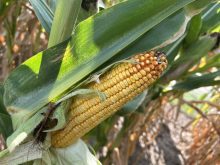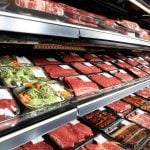Manitoba’s weanling pig exporters have learned a brutal lesson about
business ethics and the need for suspicion.
Dozens of weanling producers have had their contracts torn up by
American buyers, leaving the Manitoba producers with thousands of
piglets and no feeder barn space.
“I get a dozen calls a day of people saying ‘can you move my isoweans
for me,’ ” said Bill Oakley, the general manager of Keystone Pig
Advancement, part of Keystone Pig of America based in Oakville, Man.
Read Also

No special crop fireworks expected
farmers should not expect fireworks in the special crops market due to ample supplies.
(An isowean is a pig typically 21 days of age that is normally shipped
straight from its farrowing crate to a nursery barn.)
“It’s devastating for these guys who lose their contracts.”
A major part of Manitoba’s hog industry is based on weanling exports to
U.S. barns in the American midwest. It has been a growing and booming
business until recently.
But when pig prices began slumping as supplies began to burden packer
capacity, cash market weanling prices fell. The glut of weanlings on
the cash market has pushed the price down to $10-$14 US per pig.
Many weanling producers had contracts, but were shocked when those
buyers reneged and refused to buy the pigs. The buyers see cash market
weanling prices at $12 and decide they don’t want to buy the weanlings
they contracted at $28.
“These may be buyers who don’t have the highest of morals,” said Oakley.
For hog producers caught in this situation, there’s good news.
“It’s temporary and it’s opportunistic,” said Oakley. The worst times
are passing for overall pig prices, and weanling prices should start
heading up.
For segregated early weaning, or SEW weanlings, whose prices are based
on six-month-out hog futures, prices are already climbing and demand is
growing.
“If I could find healthy SEWs I could sell every one I could find,”
said Oakley.
“If you’re of high health, have the genetics that the packers want, you
can get SEW contracts right now. If you’re a spot marketer or have poor
herd health, your demand has not picked up yet.”
The problem for many producers is that they don’t have long-term
contracts backed by a packing company, Oakley said.
Many producers contracted with brokers who were not involved in
genetically specific long-term relationships with processors. To a
buyer like that, for whom all feeder pigs have the same value, there is
a great temptation to jump in and out of contracts if the cash market
offers better prices.
“If you’re going to have a contract, if it isn’t genotype specific, if
it doesn’t have a clause in there that says ‘we have a packer-backed
contract,’ and which lays out the terms, I’d be worried,” said Oakley.
“That sounds to me like a spot guy.”
A buyer who breaks a contract can be sued. But that isn’t easy.
” ‘Come get me, come find me,’ that’s their attitude,” Oakley said.
“Litigating across borders is a difficult thing.”
Oakley, whose company sells breeding stock to farmers and works closely
with U.S. packers to organize supply chains leading from the genetics
to the packing plant, said long-term contracts with good buyers even
out the hog cycle.
“My guys on contract are probably averaging $27 (US), versus $12 on the
spot market,” said Oakley. The contracts create a window in which
prices can fluctuate, but which eliminates the extremes.
For missing out the bottom of the price cycle these growers give away
the top end of the market, as when weanling prices surged to $50 US per
pig at one point last year.
But Oakley said these contracts are the best way to stay profitable and
in business.
“Find yourself long-term reputable buyers, as opposed to spot market
buyers,” said Oakley.
“There are a lot of good buyers out there, but you’ve got to make sure
of it. You’ve got to know your buyer.”















